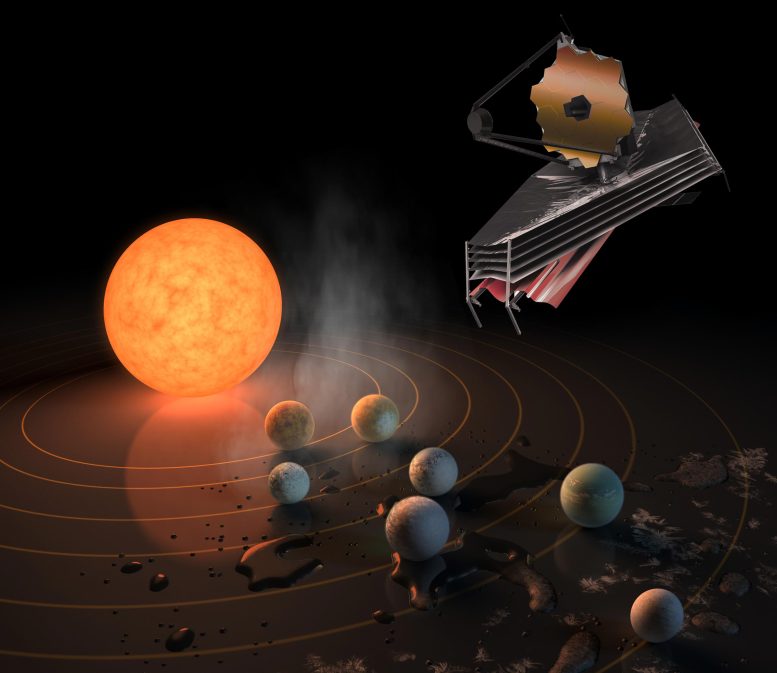
Posted on 03/09/2022 8:37:07 AM PST by Red Badger

TRAPPIST-1 Webb Space Telescope
During its first operating cycle, the James Webb Space Telescope will set its sights on the TRAPPIST-1 system, an incredible collection of seven rocky exoplanets 41 light years away from Earth.
Astrobiologists like Dr. Giada Arney from the NASA Goddard Space Flight Center are excited about this system because TRAPPIST-1 is a perfect laboratory for studying habitability! It consists of seven rocky planets, distributed across the system’s habitable zone, or the area around a star where it is not too hot and not too cold for liquid water to exist on the surface of surrounding planets. Webb will characterize the atmospheres of these planets and help scientists learn more about planetary formation and habitability.
VIDEO AT LINK..........................
See Part 1 in this video series.
Video Transcript:
Well, TRAPPIST-1 is a really exciting system for James Webb to observe. It’s going to observe TRAPPIST-1 early in its operating cycle.
And the reason why astronomers are so excited by TRAPPIST-1 is that it’s a system of seven, you know, not just one or two, but seven rocky planets orbiting a really low mass star.
This is really, really interesting because these planets sort of are a natural laboratory to study processes that might impact planetary habitability. And the reason for that is because some of the planets in that system are too close to the star to be habitable. They’re probably too hot.
Some of the planets in that system are just the right distance from their star to possibly be habitable. And then at least one of the planets in the system is probably too cold to be habitable. If I were to guess, I would probably guess that it’s cold and frozen over.
So by studying all the planets in the system and comparing and contrasting their characteristics, we might learn more about how planetary habitability varies as you move out or inward from your distance from your parent star, and also about the different processes that can enable or maybe destroy habitability at different distances from your star.
That’s really, really exciting.
And all of these planets are orbiting the same star.
So we know they’re all formed together; they’re all from the same material; they all experience the same processes from the star over their lifetime.
So, it’s a really, really nice system to use for this kind of comparison.
And of course, we also want to search for biosignatures in the atmospheres of the potentially habitable TRAPPIST-1 planets. And if we find things that’ll be really, really interesting because these low mass stars like TRAPPIST-1 are, they’re very different from our massive Sun-like stars.
These low mass stars tend to be… they’re really, really active. They produce a lot of high energy stellar flares. They produce a lot of high-energy radiation.
So, whatever evolutionary history these planets have had over time, it’s probably pretty different from the planets of our solar system just because its star behaves so differently.
And so, it’ll also be really, really interesting to compare the planets in the system to the rocky planets in our solar system and see, you know, in what ways are these planets different, but also in what ways are they the same?
THANK YOU!>..........................👌👍👌👍👌👍😍......
I guess I should have known it was an acronym. But are planetesimals offended by being designated as such?
I don’t know, I’ll have to ask.............
In the lower-left corner there is an indication of where Musk’s red sports car disappeared to...
Well the old saying less is better can come shining thru here!! Slight, very slight tints of color. you know... Like they used to 30 and 40 years ago!!
I hate to say this, but the Webb Space Telescope isn’t in operation yet…..
Disclaimer: Opinions posted on Free Republic are those of the individual posters and do not necessarily represent the opinion of Free Republic or its management. All materials posted herein are protected by copyright law and the exemption for fair use of copyrighted works.